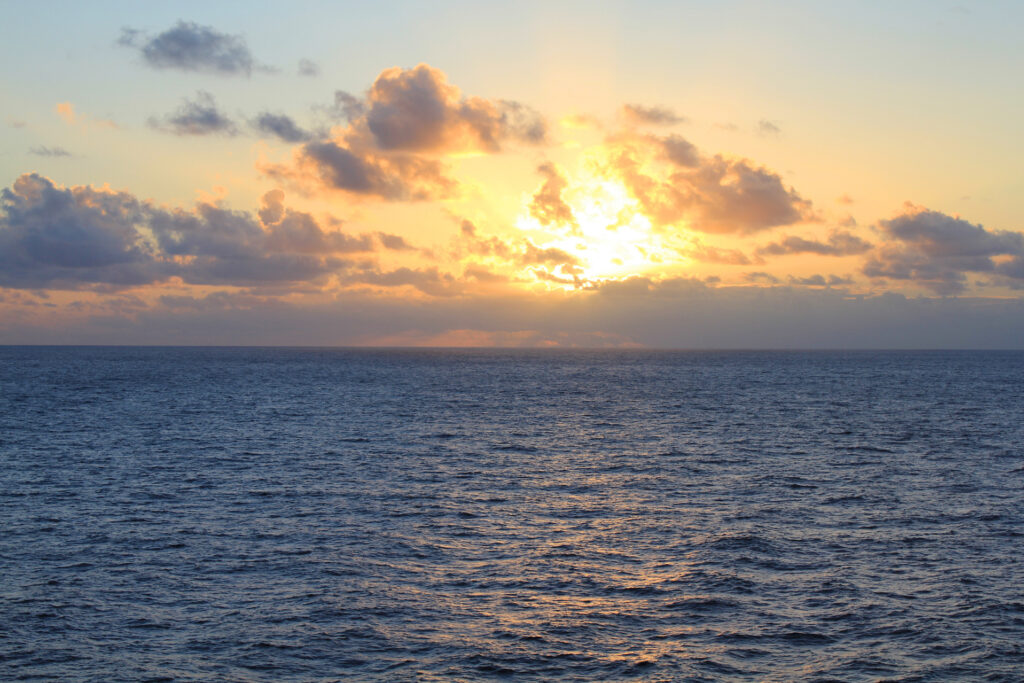From CO2Science: Working with a 39.33-meter-long piston core of sediments retrieved from a water depth of 431 meters by the RV Marion Dufresne in 2003 within an abandoned meander of the Cap-Breton Canyon in the southeast Bay of Biscay, Mary et al. (2014) used data derived from planktonic foraminifera assemblages coupled with a multi-proxy approach that associates grain-size measurements, x-ray fluorescence elemental analysis and stable oxygen isotope assessments of Globigerina bulloides shells to infer sea surface temperature (SST) changes over the last two millennia (see figure below).
Paper reviewed: Mary, Y., Eynaud, F., Zaragosi, S., Malaize, B., Cremer, M. and Schmidt, S. 2014. High frequency environmental changes and deposition processes in a 2 kyr-long sedimentological record from the Cap-Breton canyon (Bay of Biscay). The Holocene 25: 348-365.

Reconstructed mean annual sea surface temperatures (SST) derived from analyses of planktonic foraminifera assemblages. Grey bars locate minimum in solar activity (D: Dalton Minimum, M: Maunder Minimum, O: Oort Minimum, S: Spörer Minimum, W: Wolf Minimum). Climatic event intervals are interpreted from core MD03-2693 SST oscillations (see text). Adapted from Mary et al. (2015).
Of great interest and importance in this regard are the discoveries of what the six scientists call “well-known temperature anomalies such as the ‘Little Ice Age’ (LIA) and the ‘Medieval Warm Period’ (MWP),” which they say are “remarkably in phase with other late Holocene temperature records of the North Atlantic, and more particularly with the temperature record of the Chesapeake Bay (Cronin et al., 2003, 2010), and with the composite record of temperature anomalies in the North East Atlantic from Cunningham et al. (2013).”
Also of great interest and importance, Mary et al. compared their SST data with “reconstructed Total Solar Irradiance (TSI) data after Bard et al. (2003, derived from quantitative study of 14C and 10Be production rates),” finding that low TSI values correspond to cold episodes, whereas high TSI values correspond to warm periods, while further noting that “Maunder (c. AD 1645-1715) and Sporer (c. AD 1420-1530) minima are particularly well expressed within the SST annual signal.”
Once again, therefore, we have further confirmation of the reality of the Little Ice Age and the Medieval Warm Period, along with new evidence from the Bay of Biscay, where peak mean annual temperature (MAT) of the Medieval Warm Period was approximately 1.7°C warmer than the peak MAT of the Current Warm Period (see figure above from which this calculation was derived).
References
Bard, E., Raisbeck, G., Yiou, F. et al. 2003. Reconstructed Solar Irradiance Data. IGBP PAGES/World Data Centre for Paleoclimatology Data Construction Series #2003-006. NOAA/NGDC Paleoclimatology Program, Boulder, Colorado, USA.
Cronin, T.M., Dwyer, G.S., Kamiya, T., Schwede, S. and Willard, D.A. 2003. Medieval warm period, Little Ice Age and 20th century temperature variability from Chesapeake Bay. Global and Planetary Change 36: 17-29.
Cronin, T.M., Hayo, K., Thunell, R.C., Dwyer, G.S., Saenger, C. and Willard, D.A. 2010. The Medieval Climate Anomaly and Little Ice Age in Chesapeake Bay and the North Atlantic Ocean. Palaeogeography, Palaeoclimatology, Palaeoecology 297: 299-310.
Cunningham, L.K., Austin, W.E.N., Knudsen, K.L., Eiriksson, J., Scourse, J.D., Wannamaker Jr., A.D., Butler, P.G., Cage, A.G., Richter, T., Husum, K., Hald, M., Andersson, C., Zorita, E., Linderholm, H.W., Gunnarson, B.E., Sicre, M.-A., Sejrup, H.P., Jiang, H. and Wilson, R.J.S. 2013. Reconstructions of surface ocean conditions from the northeast Atlantic and Nordic seas during the last millennium. The Holocene 23: 921-935.



It is worth pointing out that although Coningsby is a rural village in Lincolnshire it is also a large airbase where the RAF and American planes fly sorties monitoring Russian military activity on its borders with Europe. Obviously lots of concrete and jet engines where the temperature is measured rather than in a farmers field are very unlikely to produce honest readings. That is the regular m.o. of these people though isn't it?